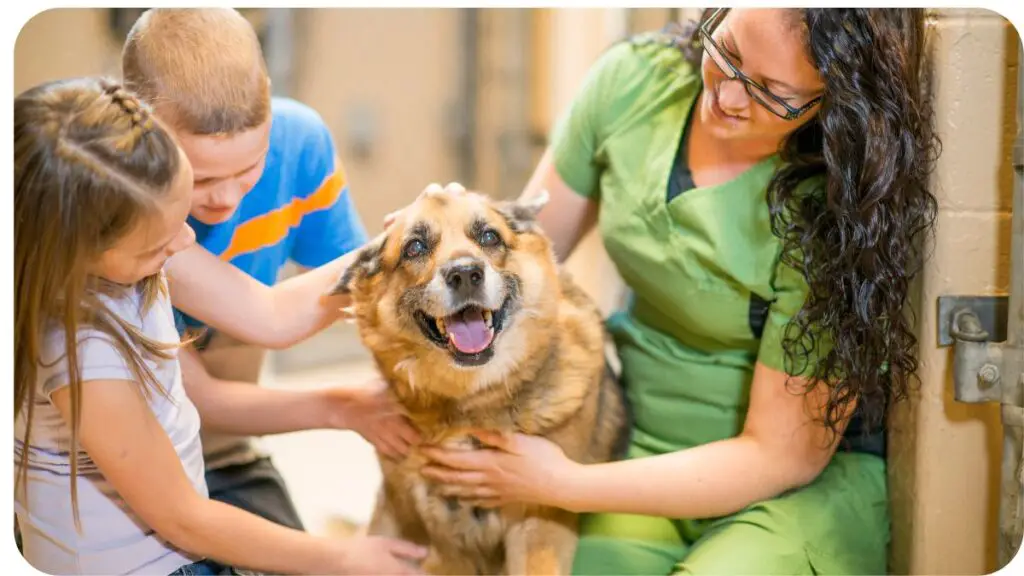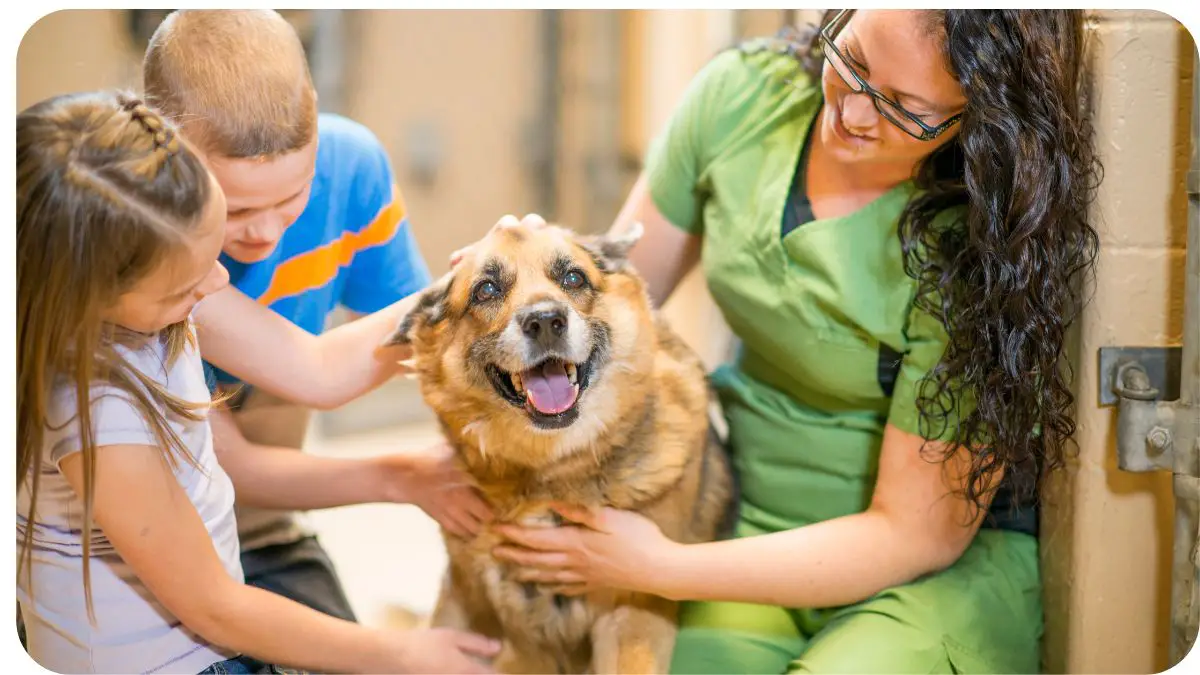Welcoming a dog into your life comes with joy and responsibilities. Training your furry friend is a crucial part of fostering a harmonious and fulfilling companionship. Among the tools available, PetSafe collars stand out for their effectiveness in teaching and correcting behaviors. In this comprehensive guide, we’ll delve into the world of PetSafe collars and how to use them to transform your dog’s behavior.
| Takeaways |
|---|
| 1. PetSafe collars offer effective and safe training tools for dogs of various sizes and behaviors. |
| 2. Positive reinforcement techniques are crucial for successful training using PetSafe collars. |
| 3. Basic commands lay the foundation for a well-behaved dog and a strong bond. |
| 4. Address behavioral issues with targeted training strategies and consistency. |
| 5. Gradually progress to advanced training, such as off-leash and agility training. |
| 6. Prioritize your dog’s safety by following proper collar fit and usage guidelines. |
| 7. Challenge common misconceptions and myths about PetSafe collars with accurate information. |
| 8. Learn from real-life success stories to motivate and inspire your training journey. |
| 9. Troubleshoot common training challenges using practical solutions. |
| 10. Explore different PetSafe collar models and accessories to enhance your training toolbox. |
Understanding PetSafe Collars
PetSafe collars utilize modern technology to facilitate training while ensuring your dog’s comfort and safety. These collars come equipped with various features such as remote control, adjustable stimulation levels, and even compatibility with mobile apps for more personalized training. Each collar model caters to specific training needs, from basic obedience to advanced behavioral adjustments.
“When training your dog, remember the importance of consistency and patience. Read more about it in our comprehensive guide on dog agility training.”
Choosing the Right PetSafe Collar for Your Dog

Before diving into training, it’s essential to select the appropriate collar for your dog’s size, breed, and behavior. Refer to the table below for a quick comparison of some popular PetSafe collar models:
Table: Comparison of PetSafe Collar Models
| Model Name | Suitable Dog Size | Training Purpose | Special Features |
| PetSafe Basic | Small to Large | Basic Obedience | Tone and Static Stimulation |
| PetSafe Lite | Small to Medium | Gentle Training | Light Stimulation |
| PetSafe YardMax | Medium to Large | Yard Area Management | In-ground Fence System |
| PetSafe Remote | Small to Large | Remote Training | 3 Training Modes, Tone, Vibration, Stimulation |
| PetSafe Elite | Small to Large | Advanced Obedience | Customizable Stimulation Levels |
Getting Started with Training
Using a PetSafe collar requires patience and understanding. Begin by introducing the collar to your dog in a positive environment. Let them wear it for short periods, associating it with treats and playtime. This familiarity minimizes initial resistance.
“Transform your canine companion into the perfect family pet with effective techniques. Explore our insights on training your dog for family life.”
Positive Reinforcement Techniques

Positive reinforcement is the cornerstone of effective training. When your dog exhibits desired behavior, reward them promptly. This could be in the form of treats, praise, or play. The table below outlines some common positive reinforcement techniques:
“Excessive barking can be a challenge, but our experts provide solutions. Learn how to train your dog to stop barking effectively and enjoy a quieter home.”
Table: Positive Reinforcement Techniques
| Technique | Description |
| Treat Training | Rewarding with treats for following commands |
| Clicker Training | Using a clicker sound to mark correct behavior |
| Playtime Rewards | Allowing play as a reward for desired actions |
| Verbal Praise | Using enthusiastic words to show approval |
Teaching Basic Commands
Basic commands lay the foundation for a well-behaved dog. Incorporate these commands into your training routine:
Table: Basic Commands
| Command | Description |
| Sit | Teach your dog to sit on command |
| Stay | Train your dog to stay in place |
| Come | Call your dog to come to you |
| Down | Command your dog to lie down |
Addressing Behavioral Issues
PetSafe collars can aid in correcting unwanted behaviors. Address problems like excessive barking, digging, or jumping using the following strategies:
Table: Addressing Behavioral Issues
| Issue | Training Strategy |
| Barking | Use a “quiet” command along with rewards |
| Digging | Provide a designated digging area with rewards |
| Jumping | Teach an “off” command to discourage jumping |
| Pulling on Leash | Utilize leash training techniques to reduce pulling |
Advanced Training with PetSafe Collars

As your dog progresses, you can move on to more advanced training techniques. These might include off-leash training, agility training, and even tricks. Remember that consistency and patience are key. Here’s a table highlighting some advanced training ideas:
“Teaching your dog to stay is essential for safety and obedience. Discover the most efficient methods for training your dog to stay and build a strong bond.”
Table: Advanced Training Ideas
| Training Idea | Description |
| Off-Leash Training | Train your dog to follow commands without a leash |
| Agility Training | Set up obstacle courses for physical and mental exercise |
| Trick Training | Teach fun and impressive tricks to your dog |
Safety Measures and Tips
While PetSafe collars are designed with safety in mind, it’s important to use them responsibly. Here are some safety measures and tips to keep in mind:
Table: Safety Measures and Tips
| Safety Tip | Explanation |
| Proper Fit | Ensure the collar fits snugly but comfortably |
| Gradual Stimulation | Gradually increase stimulation levels for comfort |
| Regular Checks | Inspect the collar and skin for any issues |
| Training Environment | Choose a distraction-free area for training |
| Positive Association | Associate collar wear with positive experiences |
Common Misconceptions about PetSafe Collars
There are myths surrounding the use of training collars. Let’s address some of these misconceptions to provide clarity:
Table: Common Misconceptions
| Misconception | Reality |
| “Collars are Harmful” | When used correctly, collars are safe and effective |
| “Collars Mean Punishment” | Collars can be used for positive reinforcement |
| “Collars are Last Resorts” | Collars are tools to aid training, not last resorts |
| “Collars are Cruel” | Collars are designed with your dog’s comfort in mind |
Success Stories from Pet Owners
Real-life experiences can be inspiring and motivating. Here are a couple of success stories from pet owners who used PetSafe collars for training:
“Master the essential commands that every dog owner should know. Explore our guide on the top 10 dog training commands to ensure a well-behaved and responsive pet.”
Table: Success Stories
| Owner | Dog’s Name | Training Goal | Result |
| Emily S. | Max | Stop Excessive Barking | Max’s barking reduced significantly |
| Daniel M. | Luna | Off-Leash Training | Luna confidently follows commands off-leash |
Troubleshooting and FAQs
If you encounter challenges during training, don’t worry – you’re not alone. Refer to this table for troubleshooting tips and frequently asked questions:
Table: Troubleshooting and FAQs
| Issue | Solution |
| Collar Not Working | Check batteries and ensure proper contact |
| Skin Irritation | Adjust collar fit and give the skin time to breathe |
| Dog Not Responding | Review training techniques and be patient |
| Inconsistent Behavior | Maintain consistency in your commands |
Comparison Table: Top PetSafe Collar Models
Refer to this comparison table for a quick overview of some top PetSafe collar models:
Table: Top PetSafe Collar Models Comparison
| Model Name | Suitable Dog Size | Training Purpose | Special Features |
| PetSafe Basic | Small to Large | Basic Obedience | Tone and Static Stimulation |
| PetSafe Lite | Small to Medium | Gentle Training | Light Stimulation |
| PetSafe YardMax | Medium to Large | Yard Area Management | In-ground Fence System |
| PetSafe Remote | Small to Large | Remote Training | 3 Training Modes, Tone, Vibration, Stimulation |
| PetSafe Elite | Small to Large | Advanced Obedience | Customizable Stimulation Levels |
Recommended Accessories for Training
Enhance your training experience with these recommended accessories:
Table: Recommended Accessories
| Accessory | Description |
| Training Clicker | Pair with treats for effective clicker training |
| Treat Pouch | Keep treats handy during training sessions |
| Long Leash | Great for distance training and recall exercises |
| Training Treats | High-value treats for rewarding good behavior |
Conclusion
Training your dog with a PetSafe collar is a journey that requires dedication, patience, and a deep understanding of your furry companion. By incorporating positive reinforcement techniques, teaching basic commands, and addressing behavioral issues, you can create a lasting bond based on trust and respect.
Remember, each dog is unique, and their progress may vary. Stay committed, celebrate small victories, and witness the transformation in your dog’s behavior. With the guidance provided in this comprehensive guide, you’re well-equipped to embark on this rewarding training journey with your beloved pet.
Further Reading
Explore more resources and information on training your dog with PetSafe collars:
- Amazon: Dog Training & Behavior Aids by PetSafe
Discover a wide range of training and behavior aids offered by PetSafe on Amazon. Find collars, tools, and accessories to enhance your training efforts. - PetSafe Manuals
Access a collection of manuals for PetSafe products, including collars and training devices. These resources provide detailed instructions and insights into using the products effectively. - Made-in-China: Dog Training Collar Manufacturers
Browse through a selection of dog training collar manufacturers on Made-in-China. Explore different options and compare features.
FAQs
How do I choose the right PetSafe collar for my dog?
Choosing the right collar depends on your dog’s size, behavior, and training goals. Consider factors such as collar features, stimulation levels, and compatibility with your training approach.
Are PetSafe collars safe for my dog?
Yes, PetSafe collars are designed with your dog’s safety in mind. Follow the manufacturer’s guidelines for proper usage, fit, and gradual stimulation increase to ensure your dog’s comfort and safety.
Can I use a PetSafe collar for basic obedience training?
Absolutely. PetSafe collars are versatile and can be used for basic obedience training. They offer features like tone and static stimulation to reinforce commands effectively.
How do I address skin irritation caused by the collar?
Skin irritation can occur if the collar is too tight or worn for extended periods. Ensure the collar fits comfortably and remove it for breaks. If irritation persists, consult your veterinarian.
Are there alternative training methods to PetSafe collars?
Yes, there are various training methods available, including positive reinforcement, clicker training, and reward-based approaches. It’s essential to choose a method that aligns with your dog’s personality and training needs.

My name is Dr. Hellen James, and I am a veterinarian with over 20 years of experience in pets training. My qualifications are that I have been involved in the pet industry since I was 16 years old. I have worked as a groomer, dog trainer, and veterinarian.


